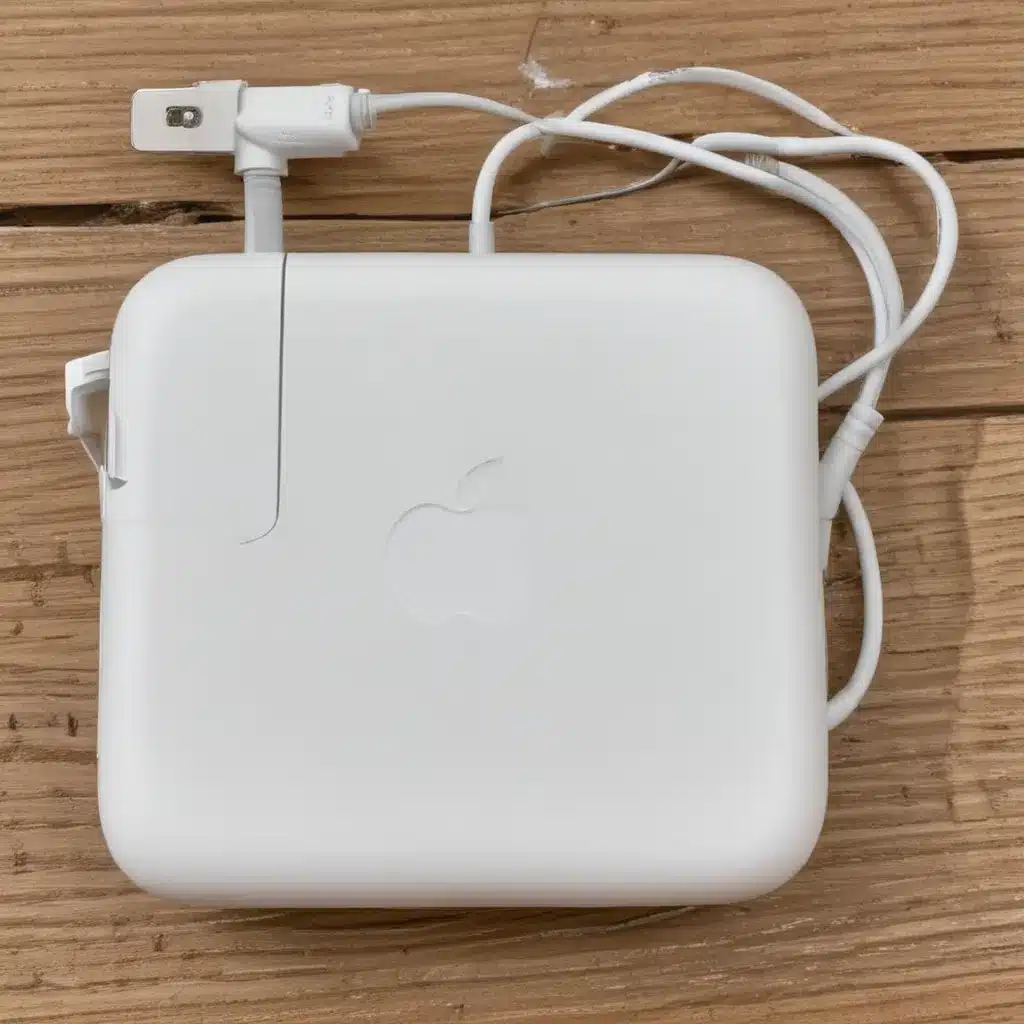Oops, Did I Break My MacBook Charger Again?
I’ll never forget the day I accidentally yanked my MacBook charger out of the port, sending my trusty MagSafe connector tumbling to the floor. As I watched the tiny pins on the charging port bend and crumple, my heart sank. Not again! This was the third time in as many years that I’d managed to destroy my MacBook’s charging capabilities.
I immediately jumped into repair mode, scouring the internet for solutions. Could I fix this myself, or was I doomed to shell out hundreds of dollars for a trip to the Apple Store? After hours of research, I’m happy to report that I was able to get my MacBook charging again without breaking the bank. If you’ve found yourself in a similar predicament, read on to learn how you can diagnose, repair, or replace a broken MagSafe connector on your MacBook.
Diagnosing a Broken MagSafe Connector
The first step is to identify the extent of the damage to your MagSafe connector. Is it just the plastic casing that’s cracked? Or have the internal pins been bent or broken? [1] A quick visual inspection should give you a good idea of what you’re dealing with.
If the plastic casing is the only thing damaged, you may be able to get away with simply replacing the MagSafe connector itself. These are relatively inexpensive, usually costing around $20-$30 on sites like PowerBookMedic [2]. Just be sure to get the right model for your specific MacBook.
On the other hand, if the internal pins have been bent or broken, you’re likely looking at a more complex repair. In some cases, the damage may have even extended to the DC-in board (also known as the MagSafe board) inside your MacBook. [2] If that’s the case, you’ll need to replace the entire board, which can cost upwards of $50-$100.
Repairing a Bent MagSafe Connector
If the damage is limited to the MagSafe connector itself, and the internal pins haven’t been severely bent or broken, you may be able to repair it yourself. This is a delicate process, but with a steady hand and a little patience, it’s entirely possible.
The key is to carefully straighten out any bent pins using a pair of fine-tipped tweezers or needlenose pliers. [3] Take your time and work slowly, applying gentle pressure to gradually bend the pins back into their original position. Be careful not to apply too much force, as you don’t want to risk breaking the pins entirely.
Once the pins are straightened, give the connector a thorough cleaning to remove any debris or dust that may have accumulated. A can of compressed air can be incredibly helpful for this step. Finally, reattach the MagSafe connector to your MacBook and give it a test to ensure it’s charging properly.
Replacing a Broken MagSafe Connector
If the damage to your MagSafe connector is too extensive to repair, or if you’d simply prefer the peace of mind that comes with a brand-new part, it’s time to replace the connector entirely. This is a fairly straightforward process, but it does require a bit of disassembly work.
Start by removing the bottom cover of your MacBook to gain access to the DC-in board (the component that houses the MagSafe port). [2] Carefully disconnect the old connector, taking note of its orientation, and then attach the new one in its place. Be sure to handle the new connector with care, as you don’t want to accidentally damage the replacement part.
Once the new MagSafe connector is in place, reassemble your MacBook and give it a test. If all goes well, you should be back in business with a fully functional charging setup.
Preventing Future MagSafe Disasters
Of course, the best way to deal with a broken MagSafe connector is to avoid the problem in the first place. Here are a few tips to help keep your MacBook charger safe and sound:
- Always unplug the MagSafe connector by gripping the plastic casing, never the cable itself.
- Be mindful of where you place your MacBook when it’s charging, and avoid situations where the cable could be easily snagged or yanked out.
- Consider investing in a MagSafe adapter or extension cable, which can help minimize the strain on the connector.
- If you’re prone to accidents, you might even want to look into a third-party MagSafe adapter that’s designed to be more durable than the stock Apple version.
With a little care and the right repair knowledge, a broken MagSafe connector doesn’t have to be the end of the world. So the next time you hear that dreaded crunch of plastic and metal, don’t panic – take a deep breath, and get ready to put your MacBook charging abilities back in order.
[1] Knowledge from YouTube video
[2] Knowledge from Apple Discussion forums
[3] Knowledge from YouTube video













